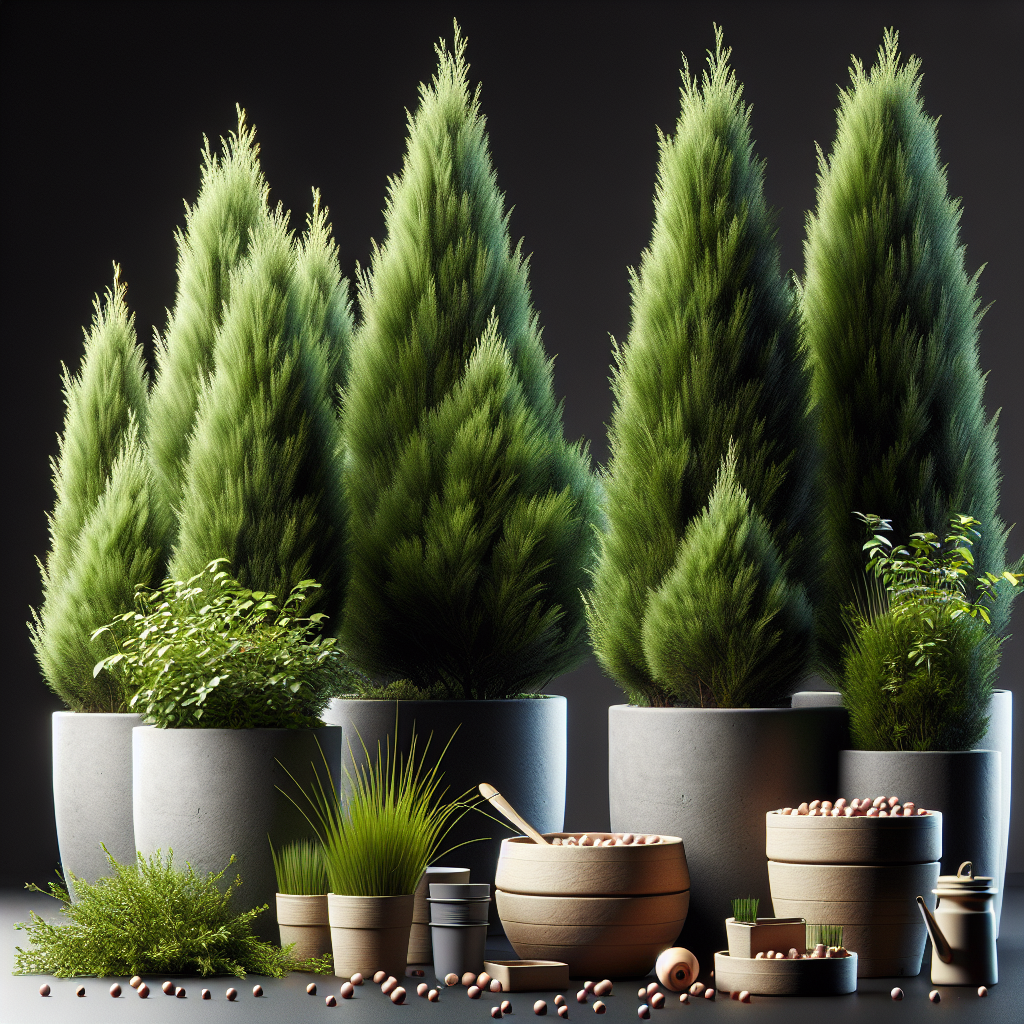Junipers are popular evergreen shrubs known for their hardiness and versatility in landscaping. While they are commonly planted in the ground, growing junipers in containers can be a great option for those with limited space or wanting to add some greenery to patios, balconies, or other confined areas. By understanding the unique needs of junipers and following some key tips and tricks, anyone can successfully cultivate these beautiful plants within the confines of containers.
In this article, we will explore the ins and outs of growing junipers effectively in containers. From selecting the right container and soil to providing proper care and maintenance, we will cover everything you need to know to ensure your junipers thrive in their confined environment. Whether you are a seasoned gardener looking to try something new or a beginner hoping to green up your living space, this guide will help you achieve success with container-grown junipers. Read on to discover how you can bring the beauty of junipers into your home or garden in a compact and manageable way.
**Choosing the Right Container**
Selecting the right container is crucial when growing junipers in confined spaces. The container should have good drainage holes at the bottom to prevent water-logging, as excess moisture can lead to root rot and other issues. Opt for a container that is slightly larger than the current root ball of your juniper plant to allow room for growth. Additionally, choose a container made of durable materials such as plastic, terracotta, or fiberglass that can withstand outdoor elements.
**Selecting Suitable Soil**
Junipers thrive in well-draining soil that is slightly acidic to neutral pH. When planting junipers in containers, it is essential to use a high-quality potting mix specifically designed for container gardening. Avoid using heavy garden soil or soils with high clay content, as they can hinder drainage and lead to root suffocation. Consider adding perlite or sand to improve drainage and aeration in the soil mix.
**Planting Junipers**
Before planting your juniper in a container, ensure that the plant’s roots are not pot-bound by gently loosening them if necessary. Place some soil at the bottom of the container before positioning the juniper plant at the desired height. Fill in around the roots with more soil, pressing gently to eliminate air pockets. Water thoroughly after planting to settle the soil around the roots.
**Watering Needs**
Proper watering is essential for healthy growth of container-grown junipers. Water your plants when the top inch of soil feels dry to the touch, but avoid over-watering as this can lead to root rot. During hot summers or dry periods, you may need to water more frequently than during cooler months. Be mindful of rainwater accumulation in outdoor containers and adjust watering accordingly.
**Sunlight Requirements**
Junipers thrive in full sun conditions but can tolerate partial shade as well. Place your containers where they receive at least 6-8 hours of sunlight per day for optimal growth and performance. Rotate containers periodically if one side seems to be receiving more sunlight than others.
**Fertilizing Junipers**
Feed your container-grown junipers with a balanced fertilizer formulated for evergreen shrubs during their active growing season (usually spring through early fall). Follow manufacturer’s instructions regarding dosage and frequency of application. Avoid over-fertilizing as it can cause nutrient imbalances and damage plant roots.
**Pruning and Maintenance**
Regular pruning helps maintain shape, size, and overall health of container-grown junipers. Remove dead or diseased branches as soon as you notice them using sharp pruning shears or scissors sanitized with rubbing alcohol between cuts. Prune lightly during spring or early summer when new growth appears.
**Winter Care**
During winter months, protect your container-grown junipers from freezing temperatures by moving them indoors or wrapping them with burlap if left outside. Reduce watering frequency during winter dormancy but ensure that plants do not dry out completely.
**FAQs**
1) Can I grow different varieties of junipers together in one large container?
It is best not recommended because each variety may have different water, sun requirements which may hinder its growth.
2) How often should I repot my container-grown juniper?
It’s recommended every 2-3 years depending on how fast it outgrows its current pot.
3) Can I grow my container-grown juniper indoors?
Junipers prefer full sun so it’s best grown outdoors if possible.
4) My juniper looks yellowish/browning – what should I do?
It could be due stress from over-watering or under-watering – check soil moisture level before taking any action.
5) What pests should I watch out for when growing Juniper?
Common pests include spider mites and bagworms – inspect regularly especially during hot/dry weather.
Growing Junipers effectively within containers can be a rewarding experience for any gardener – novice or experienced alike! With proper care and attention paid towards selecting suitable containers, providing well-draining soil mixes tailored towards their specific needs along with regular maintenance practices such as watering correctly without overdoing it plus periodic pruning sessions throughout various seasons including winter protection measures taken into account – this guide ensures successful results every time! So why limit yourself? Expand your gardening horizons today by trying out this versatile yet surprisingly resilient plant species known as Juniperus communis!













